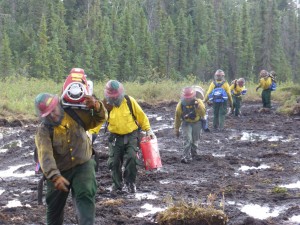
Alaska crews from multiple state and federal agencies are headed to the Lower 48 to assist in firefighting efforts there.
Tim Mowry, a public information officer for the Alaska Division of Forestry, said over the last two weeks more than a dozen Alaska people have been sent to drought-stricken areas in the Southeast United States.
“Unlike Alaska and some of the places in the West, these aren’t real big fires – I think the biggest fire is like 3,000 acres – but they’re getting a lot of fire activity, and because that area is much more densely populated than the areas in Alaska and even in the West, they have to jump on those fires pretty quick,” Mowry said.
The Alaska personnel have been assigned to fires in Alabama, Georgia, Kentucky, Mississippi, North Carolina and Tennessee.
Mowry said Alaska has primarily sent support staff.
“Dispatchers, division supervisors, crew bosses,” Mowry said. “Right now all our crews are laid-off because our fire season is over.”
Mowry said Alaska agencies are trying to cobble together at least one Type 2 Initial Attack team to send to the Lower 48.
Workers from the Alaska Division of Forestry, Bureau of Land Management – Alaska Fire Service, U.S. Fish and Wildlife Service and U.S. Forest Service have been deployed to other states.
Their involvement is part of a national effort to support firefighting efforts in the Southeast United States.
Josh is the Statewide Morning News Reporter/Producer for Alaska Public Media | jedge (at) alaskapublic (dot) org | 907.550.8455 | About Josh




